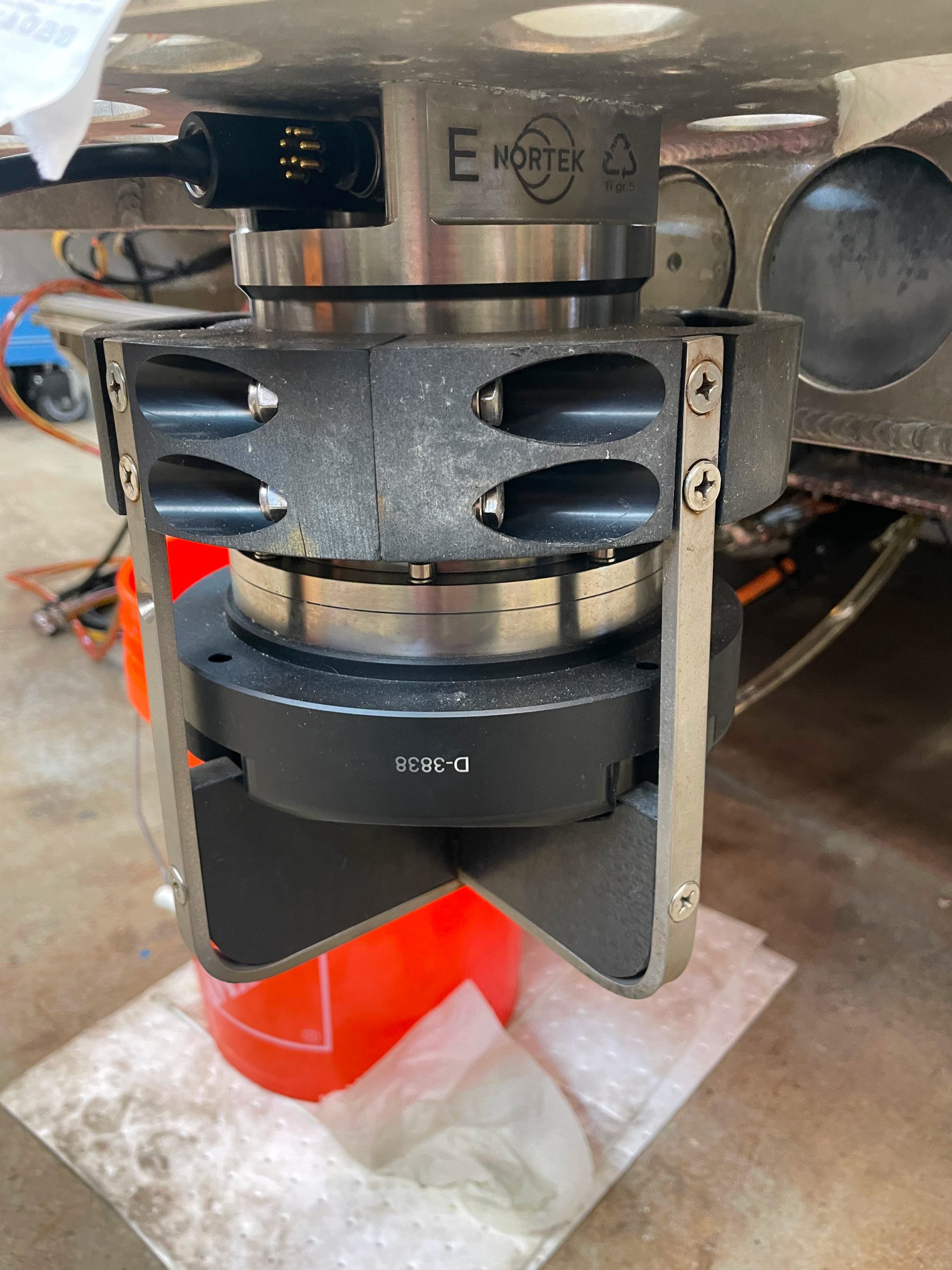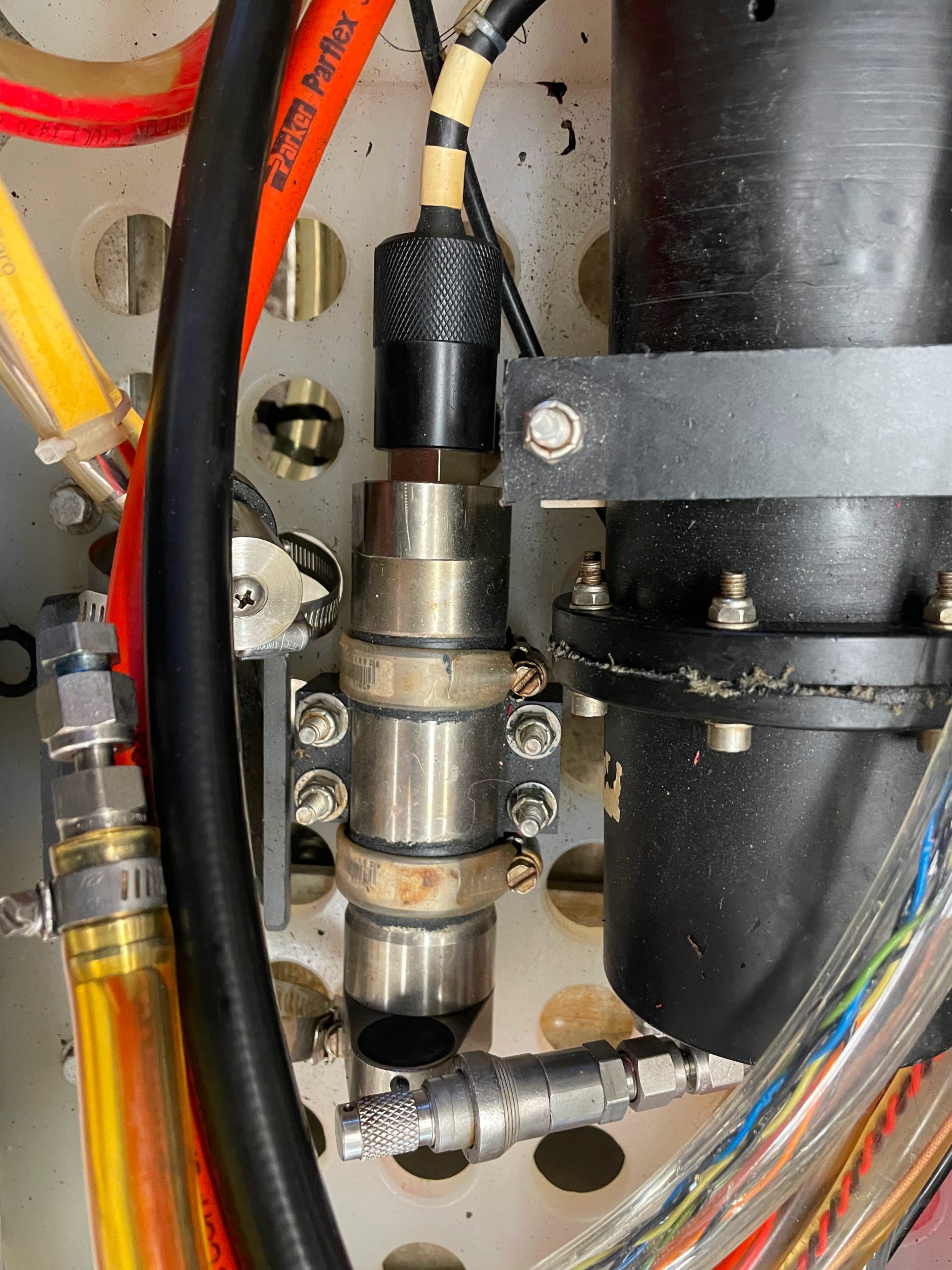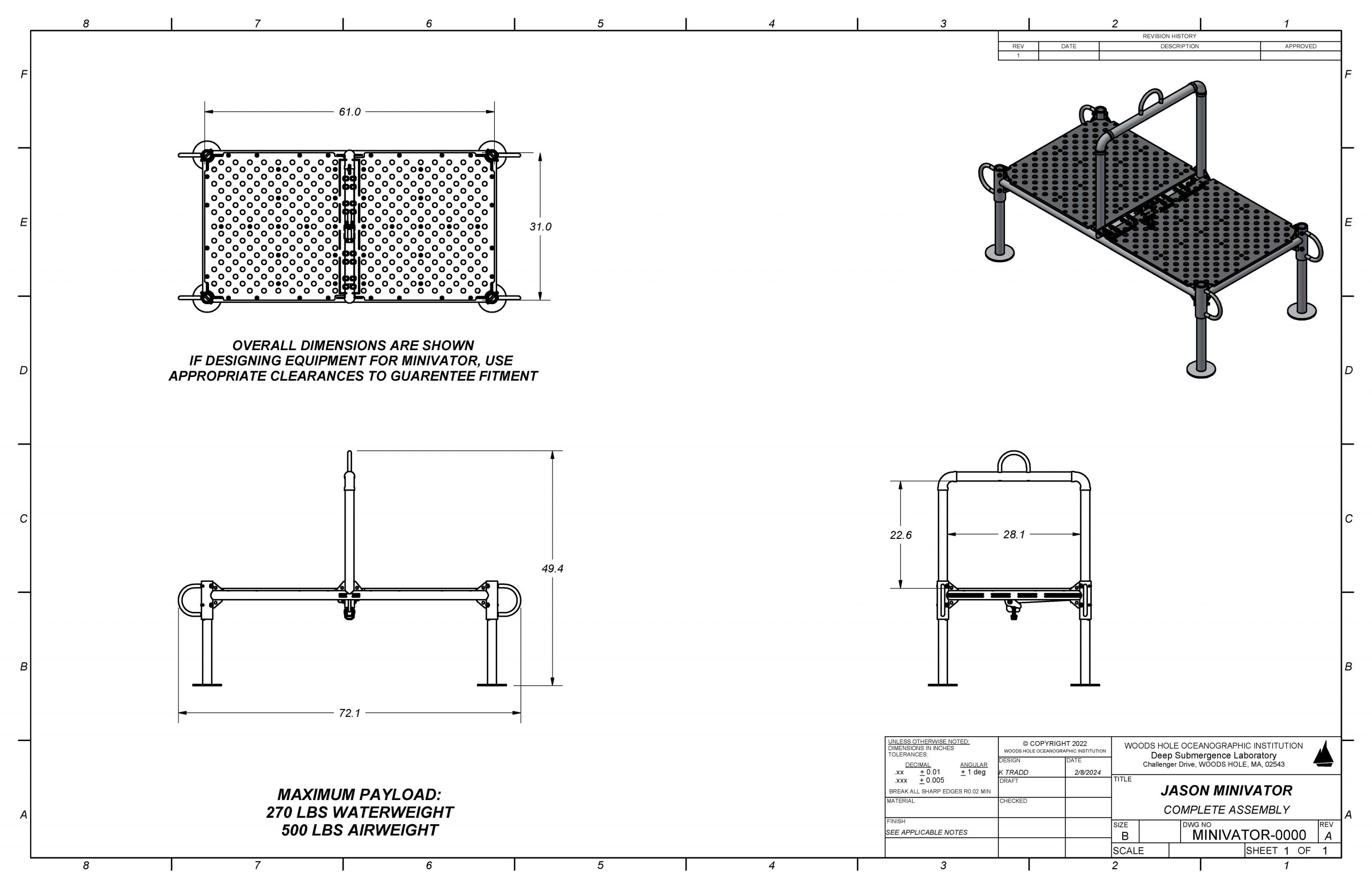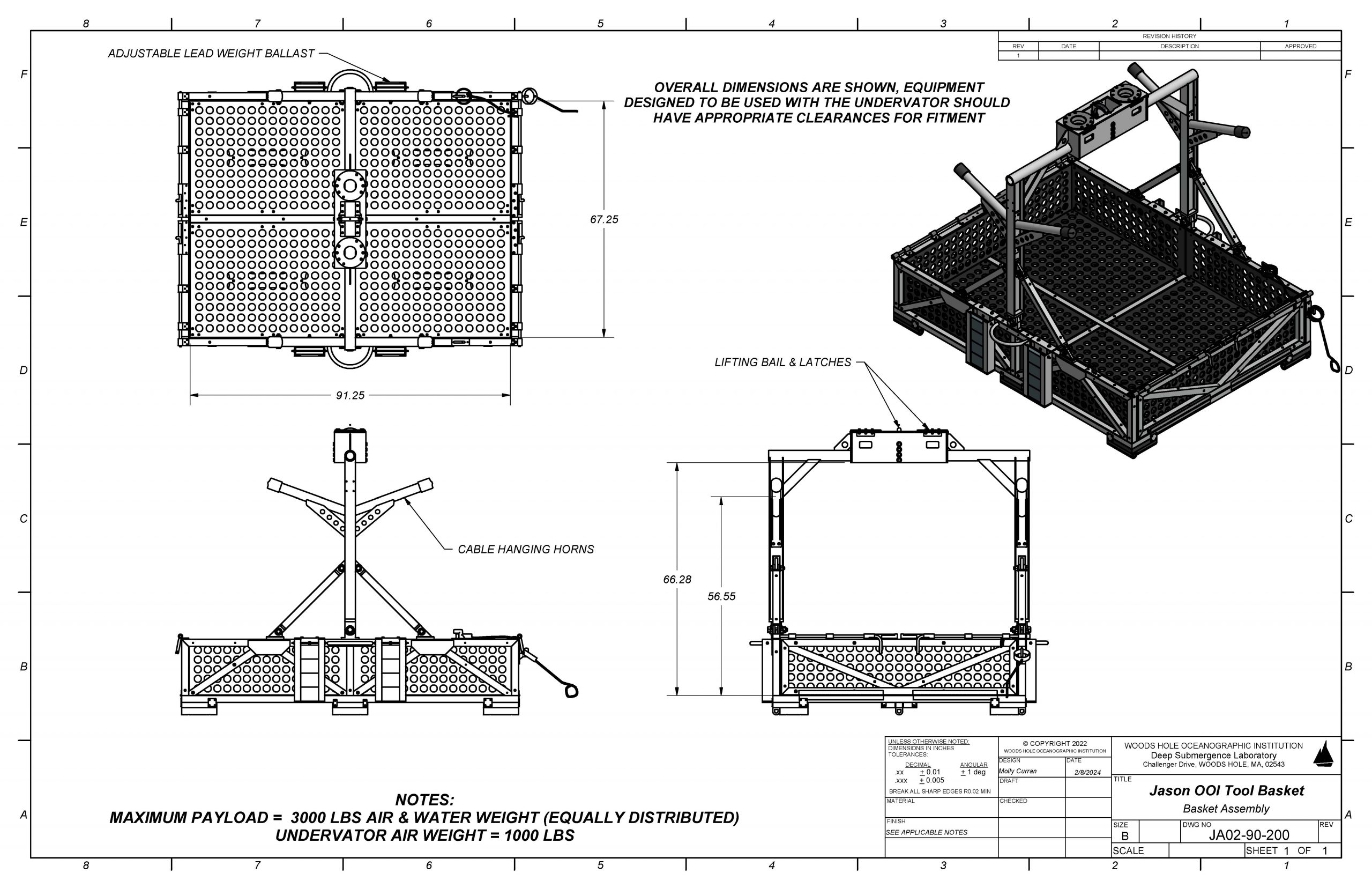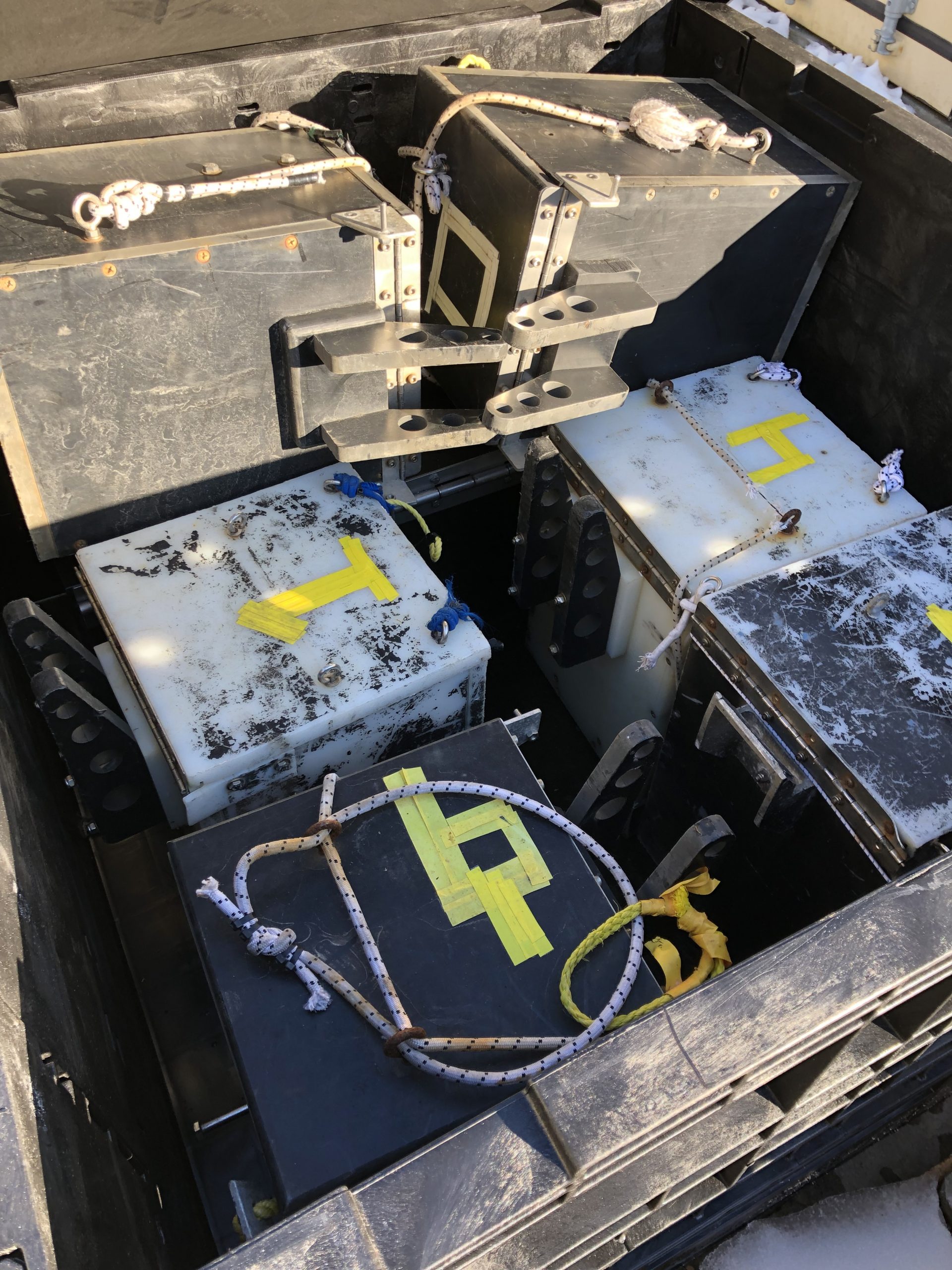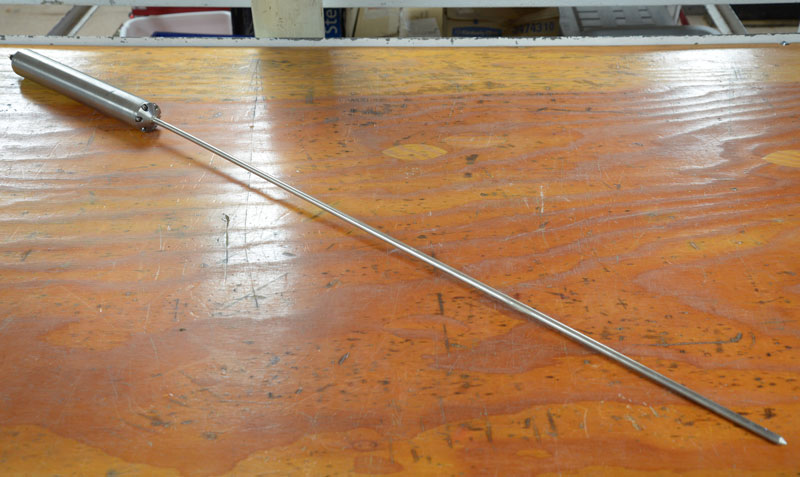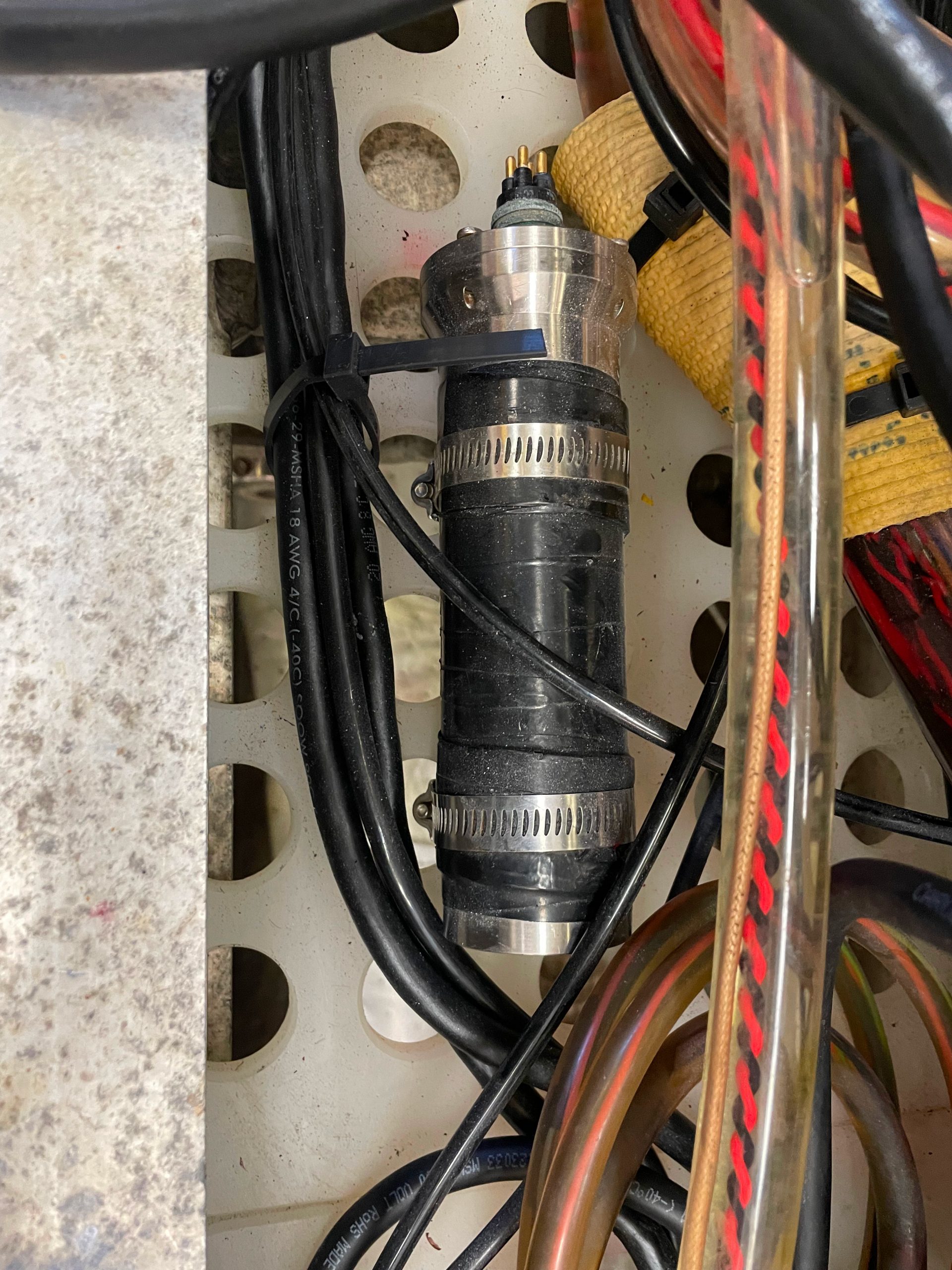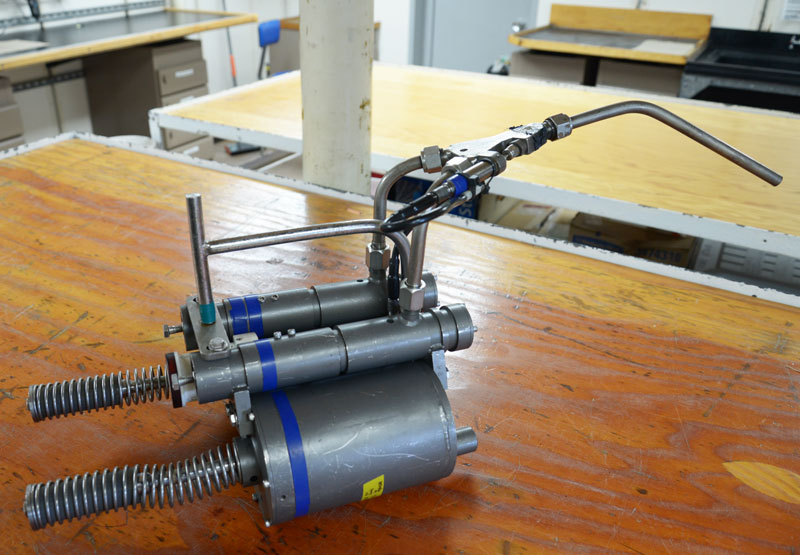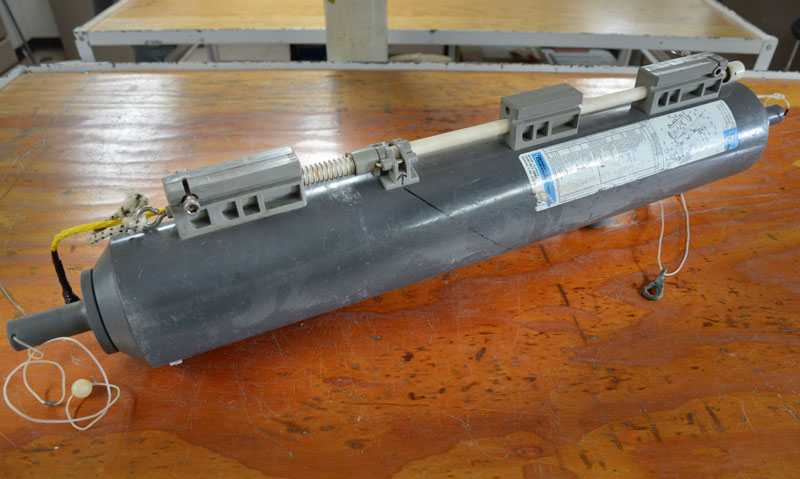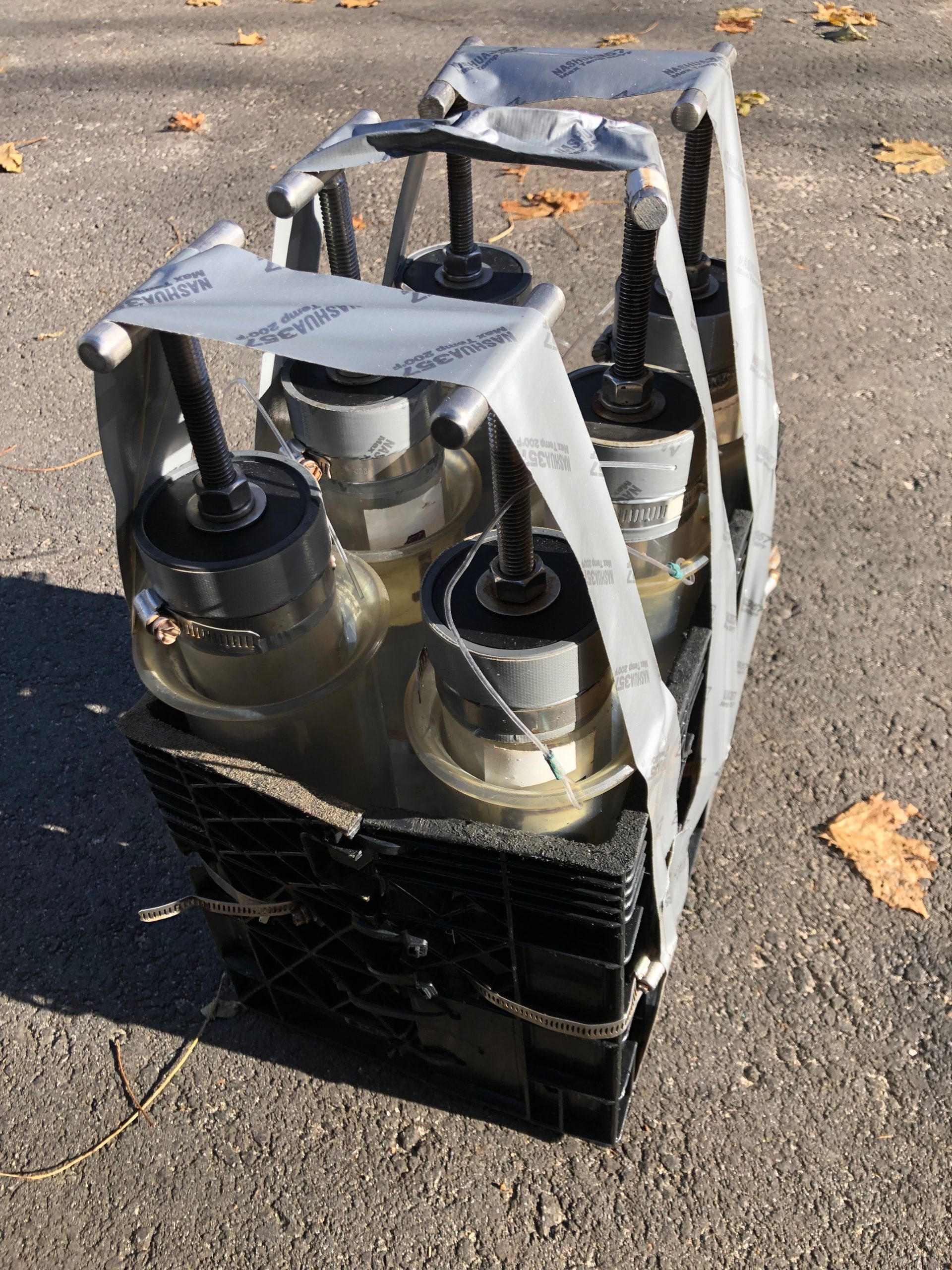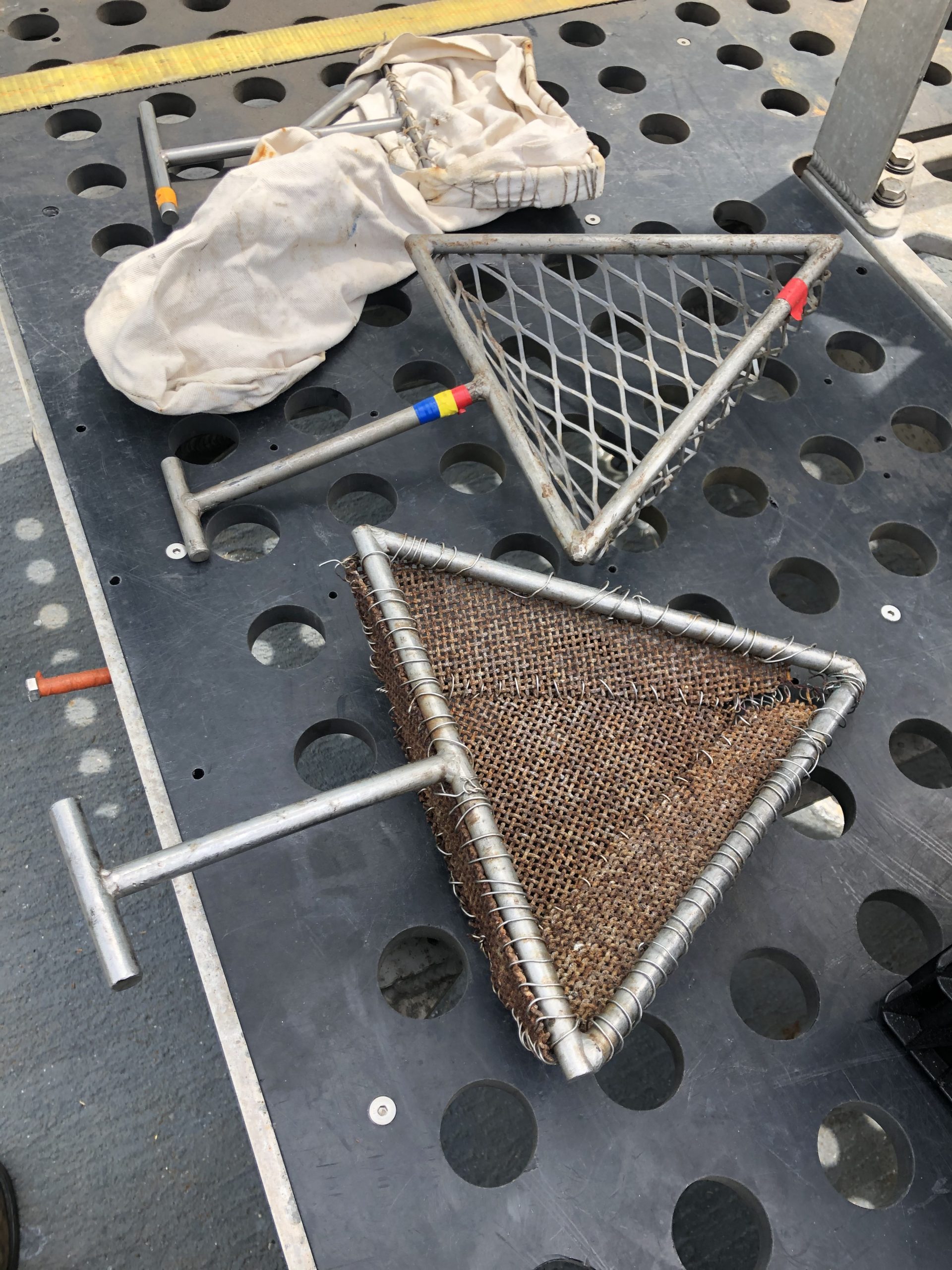Systems, Sensors & Sampling Equipment
On this page: Acoustic Sensors | Vehicle Sensors |Imaging | Lighting | Sampling Equipment
Acoustic Sensors
Navigation
- Sonardyne RangerPro USBL Navigation
- Avtrak and/or WMT Beacon 7 - 12 kHz, vehicle powered or battery operated for emergency location
- RDI Doppler Velocity Log 1200 kHz with 30m bottom lock range or 300 kHz with 100m bottom lock range
Imaging
4K UHD video camera with 20MP still capability and Mini Zeus HD Video cameras with file-based data storage system
Sampling Equipment
Scientific sampling with Jason can range from relatively simple procedures like rock retrieval to more complex data collection using specialized sensors. The ROV’s capability to interface with instruments, and the reduction in size of many external sensors, has enabled acquisition of a wide range of data types and greatly improved the quality and quantity of the data collected.
Although many of the sampling techniques used during dives have been developed and refined through years of practice, Jason Group engineers are available to assist with the development of mission-specific sampling concepts. This may include discussion of in-situ experimental methods and sampling techniques, design of custom sensors, joint operations with other vehicles (e.g., AUV Sentry), use of sampling elevators, etc.
The following are brief descriptions of the sampling gear routinely available for use by cruise participants. In most cases the samplers are carried with the system from ship-to-ship and available on short notice. In a few special cases there may be some lead time associated with preparation and availability of the equipment. In all cases the requirements to use Jason-supplied sampling equipment must be made known to the Jason Group as far in advance as possible during pre-cruise planning.
Manipulators
Schilling Robotics TITAN 4 Manipulator (2)
Servo-Hydraulic, 7-function, 1,922mm reach, 122kg lift at full-extension (454kg nominal), intermeshing jaws
Sampling Space & Payload
Forward sampling drawer “basket”: 58″W x 37″D, with hydraulic movement
Swing arms (one each side): 15.5″W x 20″D, with hydraulic movement
Aft-bay: (42″ x 22″ x 66″)
Payload (Two Body): Up to 450 lbs. depending on sensor packages and depths
Payload (Single Body): Up to 4,000 lbs.
Elevators: Three elevators are available to support a wide range of dive missions to increase sampling capacity and bottom time.
Elevator:
- Free ascent
- Payload area ~ 28.5 SQ. FT.
- Payload water weight – 170 lbs.
- Payload air weight – 1000 lbs.
- Mission configurable
Minivator
Smaller Footprint and payload
Payload area ~13 SQ.FT.
Payload Water Weight - 270 lbs
Payload Air Weight - 500 lbs
Stand alone float pack can accommodate up to three rings of syntactic foam depending on desired buoyancy
Undervator
- For use with single-body Jason configuration
- Heavy lift capacity
- Approx. 91″ long x 67″ wide
- Maximum Payload = 3000 lbs air & water weight (equally distributed)
- Undervator Air Weight = 1000 lbs
Biological Sample Collection Boxes (Bio Boxes)
Jason‘s standard biological sample boxes are constructed of 1″ thick HDPE plastic and have a fully-hinged lid with a polyurethane tube seal. These boxes provide a reasonable measure of insulation and sample integrity. They are best used for robust samples as some mixing may occur during transit. These boxes fit nicely on Jason‘s swing-arms.
Available sizes:
Standard – 12″ x 12″ x 12″, 5 available
Large – 30″ x 12″ x 12″, 2 available (can be half-sectioned via a removable central divider)
CTD
The SeaBird Seacat19v2 Profiler CTD measures conductivity, temperature, and depth (pressure) at 16 Hz (16 samples/second) as it travels through the water column. It features pumped and ducted constant flow for matched temperature and conductivity response, and measurements are made on the same sample of water with a predictable delay and predictable flow effects. CTD data can be used to calculate salinity, density, sound velocity, as well as other parameters of interest. The interface is RS-232. The CTD is typically used in a free-run ASCII output mode: alternate uses of the CTD should be addressed prior to the cruise and may require a dedicated watchstander from the science party.
Heat Flow Probes
Jason has two heat flow probes available: a 1 meter long five-element temperature sensor and a 0.60 meter long four element temperature sensor.
Both sensors are used to measure temperature gradients when inserted into soft sediments. Measurable temperature range is 0 to 40 °C, with 0.2 degree accuracy and .001 degree resolution. Additionally, a temperature pulse can be generated and monitored to observe temperature decay in sediments. Data from the heat flow probe is normally displayed on the observer’s internal video overlays and is additionally recorded in the submersible’s computer data files. Only one probe may carried during a dive. Water weight is 4 lbs each. Basket space is required to carry the quiver.
Magnetometer
Honeywell Magnetometer
This is a 3-axis magnetometer based on the Honeywell HMR2300 sensor. It is capable of measuring up to ±2 Gauss with <70µGauss resolution, at about 10 samples per secear 50
Major Water Samplers
Jason has eight Major water samplers available.
These 760 ml syringe-style instruments have inert titanium housings, and are capable of handling water temperatures in excess of 400°C. They are typically mounted to the manipulator and triggered using a hydraulic tom-thumb ram. Post-dive care and maintenance of this equipment is the responsibility of the science party.
Niskin Bottles
Jason has four, 5L General Oceanics Model 1010 Niskin Water Samplers available.
These instruments are commonly used to capture water column and hydrothermal vent plume water samples. They seal off the sample and allow it to be brought to the surface without mixing with water from different depths. The water collected by Niskin bottles is used for studying plankton or measuring many physical characteristics such as salinity, dissolved oxygen, nutrient concentrations (such as phosphate, nitrate and nitrite), and dissolved organic and inorganic carbon. Jason can carry two 5L bottles on its starboard side in an area that would otherwise be unused, but it can also accommodate additional bottles in the front basket or aft bay. The samplers are rigged with releases that can be triggered using the manipulators.
Push Corers
Push corers are soft sediment samplers deployed using a manipulator. They are 2.5″ ID by 12″ long, utilizing a removable, clear polycarbonate barrel. Commonly stowed in a 3 x 4 rack for a total of 12 corers, Jason can carry two of these racks for a maximum of 24 corers per dive. Note that carrying this many corers will limit the basket space available for additional science equipment. The racks are easily removable for post-dive processing.
There are a limited number of core barrels available during any particular leg. Investigators contemplating keeping samples in a collection barrel for post-cruise examination must make arrangements to replace all barrels used. PIs should also be prepared to supply watertight plastic endcaps for any samples taken. Procurement information for these two items can be furnished upon request. Water weight per 3 x 4 rack is 20 lbs; overall basket space required is 12″ x 18″ per rack.
Rock Collection Baskets
Jason can be equipped with milk crates fastened to the science basket in order to transport rocks or other bulky items collected using a manipulator. If desired, the milk crates can be divided in order to help distinguish rocks taken from multiple sites.
Equipment available:
- 12″ x 12″ x 12″ milk crates
- 12″ x 18″ x 12″ milk crates
Scoop Nets
A number of manipulator-deployed scoop sample nets are available in various shapes and sizes. Typically these are rigged with an open 1/4″ mesh bag or canvas rock bag and placed in the science basket on a space available basis. Water weight is 2 lbs each.
Slurp Samplers
The slurp samplers consist of a collection chamber and a hydraulically powered water pump. A nozzle with a tube connected to it is held and moved by a manipulator while water is pulled into the nozzle by the pump. The water travels down the tube into the collection chamber, and then goes through a mesh screen before going through the pump itself. Biological samples are sucked into the nozzle and deposited in the collection chamber. They are kept from going into the pump by the mesh screen. The screen can be changed for coarser or finer mesh as needed. Two styles of collection chamber are available; large Single Chamber and 5-Chamber.
Read more
Single Chamber: A large cylindrical single collection chamber into which all samples will be deposited.
5-Chamber: 5 separate cylindrical collection chambers of 4.5 inch ID x 11.5 inch height. One chamber is used at a time, and the chambers are rotated into place to be used by a hydraulic actuator mounted to the bottom of the 5-Chamber assembly.
Temperature Probes
RTD
The resistance temperature device (RTD) is capable of measuring water temperature up to 400°C, reporting about one sample per second. The instrument provides 0.01°C resolution and accuracy is 0.02°C. The case is 4″ diameter by 6″ long, with typical sensor tips ¾” diameter and 12″ long. Sensors are manipulator deployable utilizing a T-handle. The instrument can be configured to report temperature from up to four sensors at once, though the time response is greatly decreased.
Read more
ICL
The inductively-coupled link (ICL) temperature probe is a wireless data transfer device most commonly used in conjunction with major water samplers to take real time temperature measurements during sampling. The ICL electronics can also be used for a variety of other data transfer and control functions. The sensor tip of the ICL probe is installed in the inner bore of the water sampler intake nozzle and senses the fluid temperatures as water flows past. The measurable temperature range of the probe is 0 to 450°C. Data from the probe is normally displayed on the observer’s internal video overlays and is additionally recorded in the submersible’s computer data files. Water weight (ICL probe only) is 1 lb.

